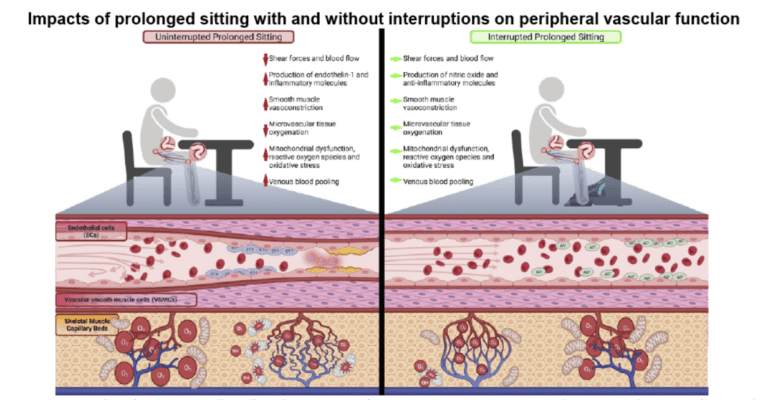Being Conscious of Our Need for Work-Life Balance in High Screen-Time World:
This summer is a sports enthusiast’s dream, with Euro 2024, Wimbledon, and the upcoming Paris Olympics captivating our attention. While we cheer on our favorite teams and athletes, it’s easy to get caught up in the excitement and find ourselves glued to screens for hours on end and forgetting that all-important work-life balance. Add to that the demands of the modern workplace, and it’s no wonder many of us are leading increasingly sedentary lifestyles.
But the consequences of prolonged sitting and screen time are far from trivial. According to the World Health Organization (WHO), physical inactivity is a leading risk factor for global mortality, contributing to an estimated 3.2 million deaths each year. It’s associated with a higher risk of cardiovascular disease, diabetes, obesity, and even mental health issues.
The good news is that small changes can make a big difference. By incorporating simple strategies into your daily routine, you can combat the negative effects of a sedentary lifestyle and prioritize your well-being. Let’s explore some practical tips and insights to help you stay active and healthy in our screen-filled world.

1. The Power of Movement:
Get up and move every 30 minutes. It’s not just a suggestion; it’s backed by science. Even short breaks from sitting can significantly benefit your health.
Statistic: A study in the American Journal of Physiology found that just three minutes of light activity every 30 minutes can counteract the negative effects of prolonged sitting.
2. Integrate Activity into Your Workday:
- Walking Meetings: Transform your meetings into walking sessions to get your steps in and boost creativity.
- Active Commute: Ditch the car and embrace walking, biking, or public transport for a more active commute.
- Deskercise: Squeeze in mini-workouts at your desk with stretches, chair squats, or leg raises.
Statistic: Research shows that employees who participate in workplace physical activity programs report lower stress levels, increased job satisfaction, and improved productivity.
3. Mindful Screen Time:
- Take Regular Breaks: Set reminders to take short breaks from your screens every 20-30 minutes.
- Limit Evening Screen Time: Avoid screens for at least an hour before bed to improve sleep quality.
- 20-20-20 Rule: Every 20 minutes, look at something 20 feet away for 20 seconds to reduce eye strain.
Statistic: A study published in JAMA Pediatrics found that children who spent more time on screens had lower structural integrity in brain regions associated with language and literacy development.
4. Prioritize Physical Activity for Better Work-Life Balance:
Make time for regular exercise, whether it’s going to the gym, taking a fitness class, or simply going for a walk or run.
Statistic: The WHO recommends at least 150 minutes of moderate-intensity or 75 minutes of vigorous-intensity aerobic activity per week, along with muscle-strengthening activities on two or more days a week.
Building a Supportive Environment for Well-being
Employers play a crucial role in promoting employee well-being. Here are some ways to foster a supportive environment:
- Communication: Openly discuss the importance of well-being and encourage employees to prioritize their health.
- Policies: Implement policies that support healthy behaviors, such as flexible work arrangements and time off for physical activity.
- Daily Practices: Encourage walking meetings, provide healthy snacks, and create spaces for movement and relaxation.
- Culture: Cultivate a company culture that values employee well-being and makes it a priority.
Workways: Your Partner in Wellbeing
At Workways, we understand the importance of creating a healthy and productive work environment. Our flexible workspaces are designed with well-being in mind, featuring ergonomic furniture, natural light, and collaborative spaces that encourage movement and interaction. We also offer a range of amenities to support a healthy lifestyle, including fitness centers and healthy food options.
Conclusion:
In our increasingly digital world, it’s more important than ever to prioritize our physical and mental well-being. By making small changes to our daily routines and creating a supportive environment, we can thrive in the digital age while staying active and healthy.



 Fr
Fr